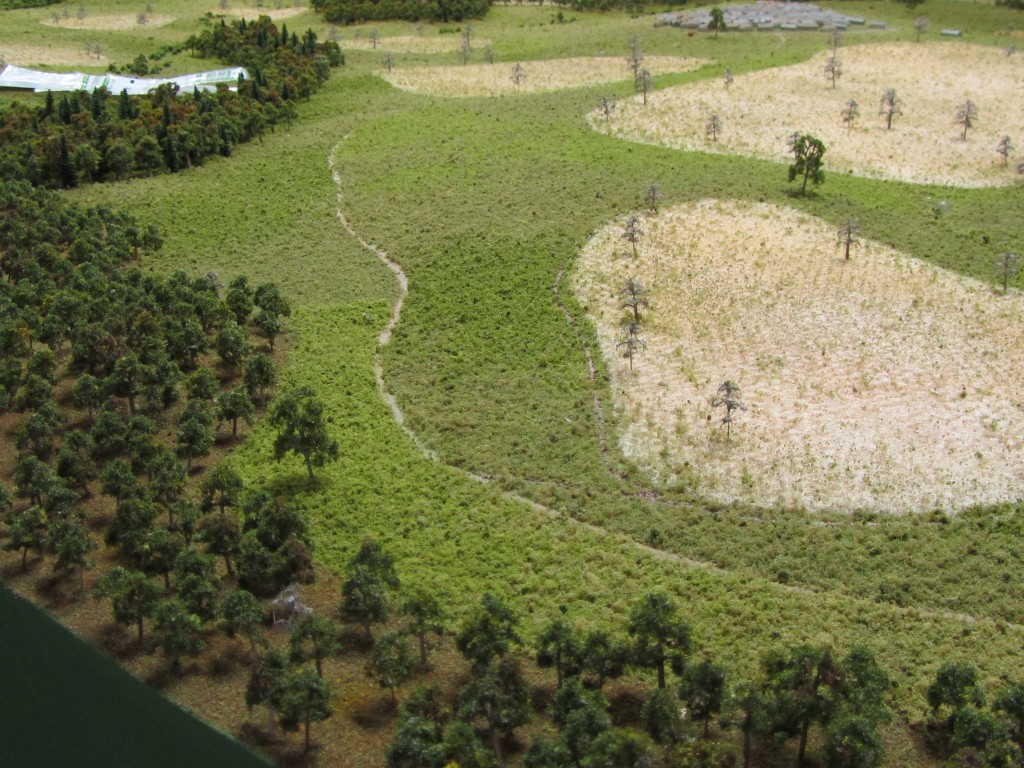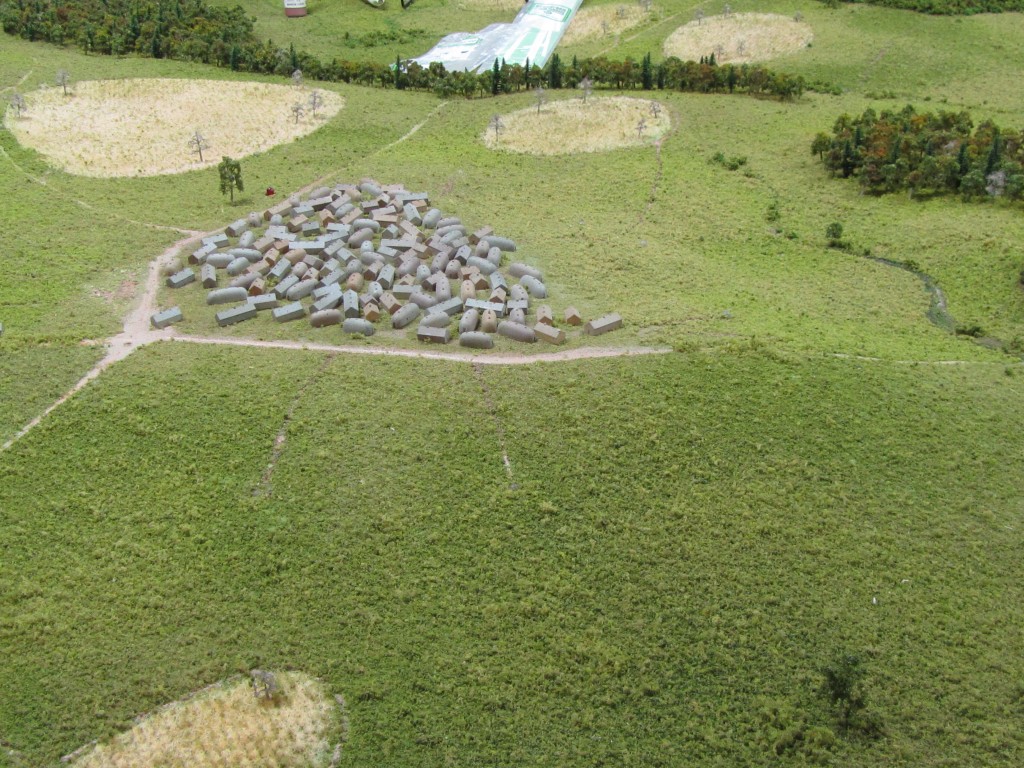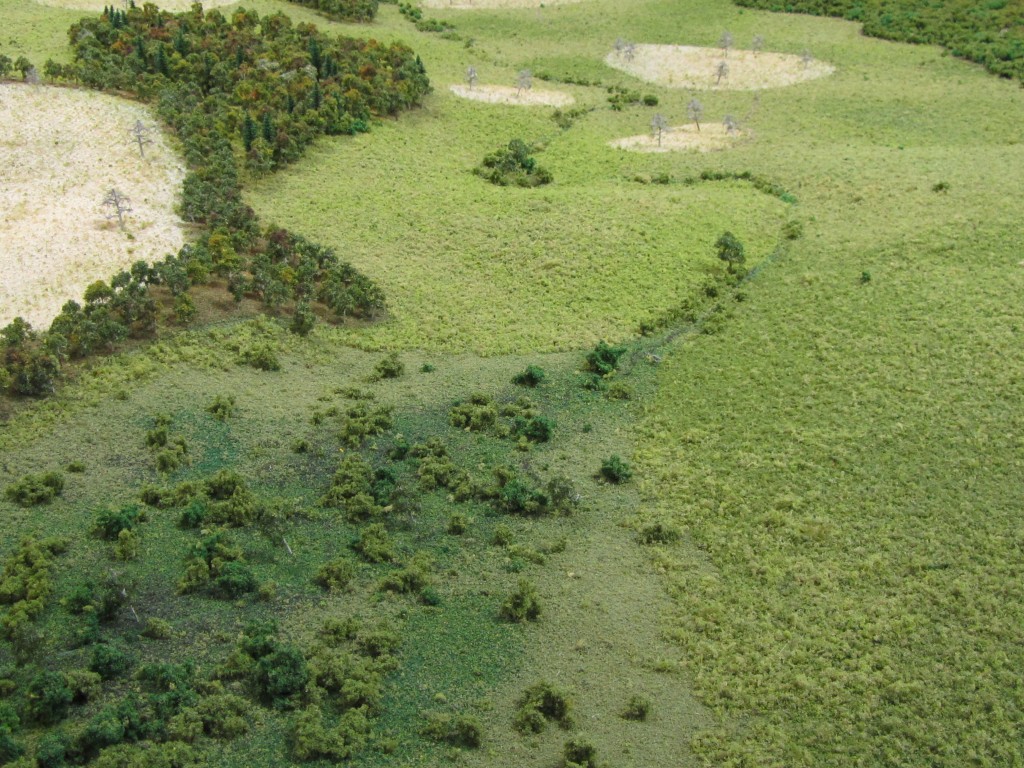Historical Site Model of Native American Community
This historical site model was created for a museum in Western NY. The model depicts a community of Native American Seneca people living in the early 1600’s. The scale of the site model is small: 1 inch = 100 feet. At such a tiny scale, the landscaping of the topography was key to providing visual impact.
The client asked for the historical site model to depict the landscape as it would have looked in early fall. Research needed to be done to find the exact textures, shapes and colors which would realistically represent this time period. Then the team experimented with various materials to accurately represent the grasses, trees, corn, and water at a tiny scale.
The site model was designed to light up various areas of the landscape as well. The corn fields, wooded areas, water sources, walking paths and gathering of longhouses each needed to light up at the push of a button. LED strips were imbedded into the surface of the model and electronically connected to a control panel. The electronic knowledge required to get each area to light up correctly was complex.
The topography base was made out of a block of foam, and programmed and cut with a CNC router in house. The lighting was created with LED strips imbedded in the foam base.
The historical site model resides in the permanent gallery section of the Seneca Arts and Culture Center in upstate New York.





